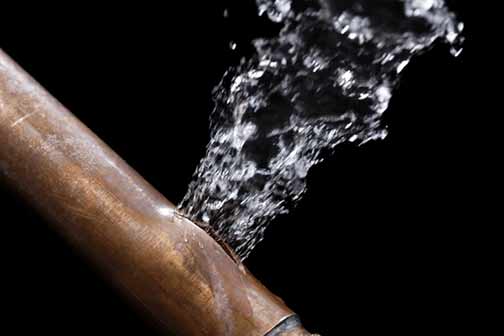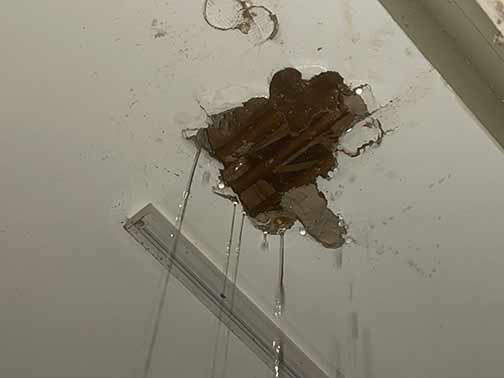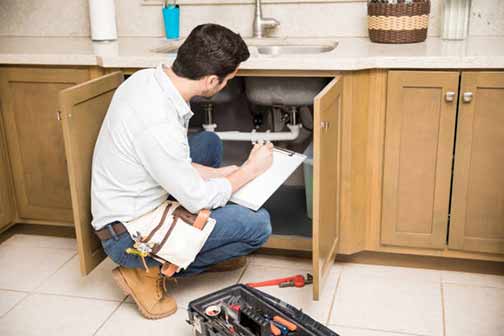
When a pipe bursts in your home, it can cause extensive damage quickly. Water can spread rapidly, soaking walls, floors, and personal belongings. The immediate danger lies in the potential for structural damage and the growth of mold, which can pose serious health risks. Recognizing the urgency of the situation is crucial to minimizing damage and ensuring the safety of your home and family.
A burst pipe can lead to significant complications, including compromised electrical systems, weakened foundations, and ruined furniture. The faster you respond, the better your chances of mitigating these risks and safeguarding your property.
Shutting Off the Main Water Supply
The first step in addressing a pipe burst is to shut off the main water supply. This action will stop the flow of water and prevent further damage. Locate the main water valve, which is typically found in the basement, crawl space, or near the water meter. Turn the valve clockwise to shut off the water supply.
If you are unsure of the valve’s location, it’s important to familiarize yourself with it before an emergency occurs. Knowing where and how to shut off the main water supply can save valuable time and reduce the extent of water damage. Additionally, ensure that all household members are aware of the valve’s location and operation.
Draining the Water System
After shutting off the main water supply, the next step is to drain the water system. This will help reduce the amount of water that can leak from the burst pipe. Open all the faucets in your home, starting with the lowest one, and let the water run out. Don’t forget to flush the toilets to empty the tanks.
This process will help relieve pressure in the pipes and minimize further leakage. Draining the water system is essential to prevent residual water from causing additional damage. It also makes it easier to identify the location of the burst pipe and prepare for repairs.
Identifying the Burst Pipe
Once the water system is drained, it’s time to identify the location of the burst pipe. Look for signs of water damage, such as wet spots on walls, ceilings, or floors. If the burst pipe is hidden behind a wall or under the floor, you may need to remove a section of drywall or flooring to access it.
Use caution and consider seeking professional help if you are unsure of how to proceed. Identifying the burst pipe accurately is crucial for effective repairs. In some cases, the damage may be extensive, requiring specialized equipment and expertise to locate and fix the issue properly.

Temporary Fixes to Stop the Leak
After locating the burst pipe, you can apply a temporary fix to stop the leak until a permanent repair can be made. One common method is to use a pipe clamp or rubber patch to seal the leak. Wrap the burst section of the pipe with a rubber patch and secure it with a pipe clamp.
This temporary solution will help contain the leak and prevent further water damage while you arrange for professional repairs. Temporary fixes are not a long-term solution but can provide immediate relief and buy you time to organize proper repairs. Ensure the temporary fix is secure and monitor it regularly until a permanent solution is implemented.
Contacting a Professional Plumber
Even if you manage to apply a temporary fix, it’s essential to contact a professional plumber to assess and repair the burst pipe. A licensed plumber has the expertise and tools necessary to make a permanent repair and ensure the integrity of your plumbing system. Delaying professional repairs can lead to more extensive damage and higher repair costs in the long run.
A professional plumber can also identify underlying issues that may have contributed to the pipe burst, providing valuable insights and recommendations to prevent future occurrences. Building a relationship with a reliable plumber can be beneficial for ongoing maintenance and emergency situations.
Cleaning Up and Drying Out
After addressing the burst pipe and stopping the leak, the next step is to clean up and dry out the affected areas. Remove any standing water using a wet/dry vacuum or mop. Use fans and dehumidifiers to help dry out walls, floors, and personal belongings. It’s important to act quickly to prevent mold growth, which can begin within 24-48 hours of water exposure.
Dispose of any items that cannot be thoroughly dried or are beyond repair. Thorough cleaning and drying are essential to restore your home to a safe and habitable condition. Pay special attention to hidden areas, such as behind walls and under flooring, where moisture can linger and cause long-term damage.
Assessing and Repairing Water Damage
With the immediate crisis under control, it’s time to assess the extent of the water damage and make necessary repairs. Inspect walls, floors, and ceilings for signs of damage, such as warping, staining, or mold growth. Depending on the severity of the damage, you may need to replace drywall, flooring, or insulation. Consider hiring a professional restoration company to ensure thorough and proper repairs, especially if mold is present.
Professional restoration services can provide comprehensive assessments and remediation, addressing both visible and hidden damage. Investing in quality repairs can prevent future issues and maintain the structural integrity of your home.

Preventing Future Pipe Bursts
To prevent future pipe bursts, take proactive measures to protect your plumbing system. Insulate exposed pipes, especially in unheated areas like basements, attics, and crawl spaces. During cold weather, keep your home at a consistent temperature and allow faucets to drip to prevent freezing. Regularly inspect your plumbing system for signs of wear and tear, and address any issues promptly.
By taking these steps, you can reduce the risk of pipe bursts and protect your home from water damage. Preventive maintenance is key to ensuring the longevity and reliability of your plumbing system. Regular inspections and timely repairs can save you from costly emergencies and provide peace of mind.
Understanding the Importance of Homeowner’s Insurance
Having homeowner’s insurance can provide financial protection in the event of a pipe burst. Review your policy to understand what is covered and consider adding additional coverage if necessary. Keep an inventory of your personal belongings and document any damage with photos and receipts. In the event of a pipe burst, contact your insurance company promptly to file a claim and seek assistance with repairs and restoration.
Homeowner’s insurance can help cover the costs of repairs, replacements, and temporary accommodations if needed. Understanding your coverage and maintaining accurate records can streamline the claims process and ensure you receive the support you need.
Maintaining a Safe and Dry Home
By following these steps, you can effectively address a pipe burst and minimize the damage to your home. Regular maintenance, prompt repairs, and proactive measures can help keep your plumbing system in good condition and prevent future issues. Remember, the key to managing a pipe burst is to act quickly and seek professional help when needed.
With the right approach, you can protect your home and ensure a safe and dry living environment for your family. Maintaining a safe and dry home requires ongoing vigilance and proactive care. By staying informed and prepared, you can address emergencies effectively and preserve the comfort and safety of your living space.
Summing It Up
Dealing with a pipe burst in your home can be a stressful and challenging experience. However, by understanding the immediate dangers, taking swift action to shut off the water supply, and applying temporary fixes, you can mitigate the damage. Contacting a professional plumber for permanent repairs and addressing water damage promptly are crucial steps in the recovery process.
By taking preventive measures and maintaining your plumbing system, you can reduce the risk of future pipe bursts and protect your home from water damage. Remember, the key to managing a pipe burst is to act quickly, stay informed, and seek professional help when needed. With the right knowledge and resources, you can navigate the challenges of a pipe burst and ensure the safety and well-being of your home and family.

